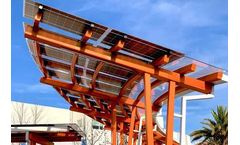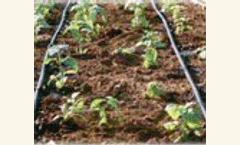Canopy Cover Articles & Analysis
19 articles found
Unlike the snow that typically comes with big game hunt, the early season consists more of rainy days: great for stalking and walking, bad for keeping dry. Even if I stay close to a canopy cover, my boots always get wet inside and out. Good thing my MobilDri is portable and quiet, so I can trek back to my truck and dry my soggy boots instead of calling it quits ...
ByVersadri
In alignment with the school’s sustainability goals, the school integrated a unique, curved LSX solar canopy for food trucks in front of the school as well as solar covered walkways to access the school and a large solar canopy over the outdoor seating area. This beautiful project was designed by Little Architects, and installed by the ...
The cameras we use on fixed wing and drone aircraft capture visual picture images (RGB), near infrared images (NIR), and thermal images. A formula is used to analyse the NIR data returned and provides Pollen Systems with two main metrics to measure plant vigor: NDVI (Normalized Difference Vegetation Index) and NDRE (Normalized Difference Red Edge). These vegetation indices are each unique ways to ...
According to Carly Ziter, an assistant professor of biology in the Faculty of Arts and Science, extensive tree canopy cover in an urban area can dramatically reduce the temperatures of their immediate environs - enough to make a significant difference even within a few city blocks. In a new paper published in the journal Proceedings of the National Academy of ...
Canopy Analysis for Crop, Forest & Plant Research The range of applications of canopy cover analysis is truly astounding. ...
Potato growers should apply slug pellets regularly and especially before the canopy meets between the row. Apply a protective treatment of slug pellets when there is between 50 -75% canopy cover to help maintain protection until after canopy closure. ...
Multi-year field experimental data from 2004 and 2011 were used to calibrate and validate the model for simulating biomass, canopy cover (CC), soil water content, and grain yield under rainfed conditions. ...
The purpose of this study was to simulate canopy cover, grain yield and water use efficiency (WUE) for soybean using the AquaCrop model. ...
South-facing hillslopes with sandy soils featured lower canopy cover, allowing greater solar radiation to reach the snow surface which led to the formation of concrete frost and faster melt rates resulting in near-surface runoff. ...
The trees stand close together in a natural, haphazard way, not in regimented rows as in plantations. Overhead the canopy cover is almost complete with a mixture of spruce, pine, aspen and birch providing lots of shade. ...
Transect sampling was used to characterize the canopy cover of the dominant species three times per year for 3 yr. Germinable seed was identified from 5-cm soil cores collected in the spring and autumn in 2 yr. ...
The conservative parameters included: canopy growth and canopy decline coefficient (CDC); crop coefficient for transpiration (Tr) at full canopy; normalized water productivity for biomass (WP*); soil water depletion thresholds for the inhibition leaf growth and of stomatal conductance, and for the acceleration of canopy ...
Model parameterization used the 2006 data and was straightforward within the designed user-interface, owing to the limited number of key parameters. Accurate simulation of canopy cover was central to sound prediction of evapotranspiration and biomass accumulation. Key user-input parameters for this purpose were identified as the coefficients defining ...
Simulations are performed on thermal time, but can be on calendar time, in daily time-steps. The model uses canopy ground cover instead of leaf area index (LAI) as the basis to calculate transpiration and to separate out soil evaporation from transpiration. ...
Furthermore, the model performed satisfactorily for the growth of aboveground biomass, grain yield, and canopy cover (CC) in the non-water-stress treatments and mild stress conditions, but it was less satisfactory in simulating severe water-stress treatments, especially when stress occurred during senescence. ...
Crop physiological measurements and comparisons between simulated and observed soil water content (SWC), canopy cover (CC), biomass production, and final seed yield of a selected number of fields were used to calibrate the AquaCrop model. ...
The objective of this study was to evaluate soil compaction and canopy cover as determinants of goosegrass competition in bermudagrass turf in sand soil. Goosegrass cover, plant density, and soil penetration resistance (SPR) were measured in traffic and no-traffic plots in bermudagrass golf course tees and sports field foul areas. ...
A major goal of this study was to evaluate the spectral response properties of four alternative winter cover crops using remotely derived crop residue cover indices. Experimental plots were located in east-central Alabama on a coarse-loamy siliceous, subactive, thermic Plinthic Paleudult. ...
We modeled change in spatial pattern and heterogeneity across the entire landscape and found a small, net decrease in woody canopy cover, however means disguised normal distributions of change that demonstrated offsetting increases and decreases. ...










